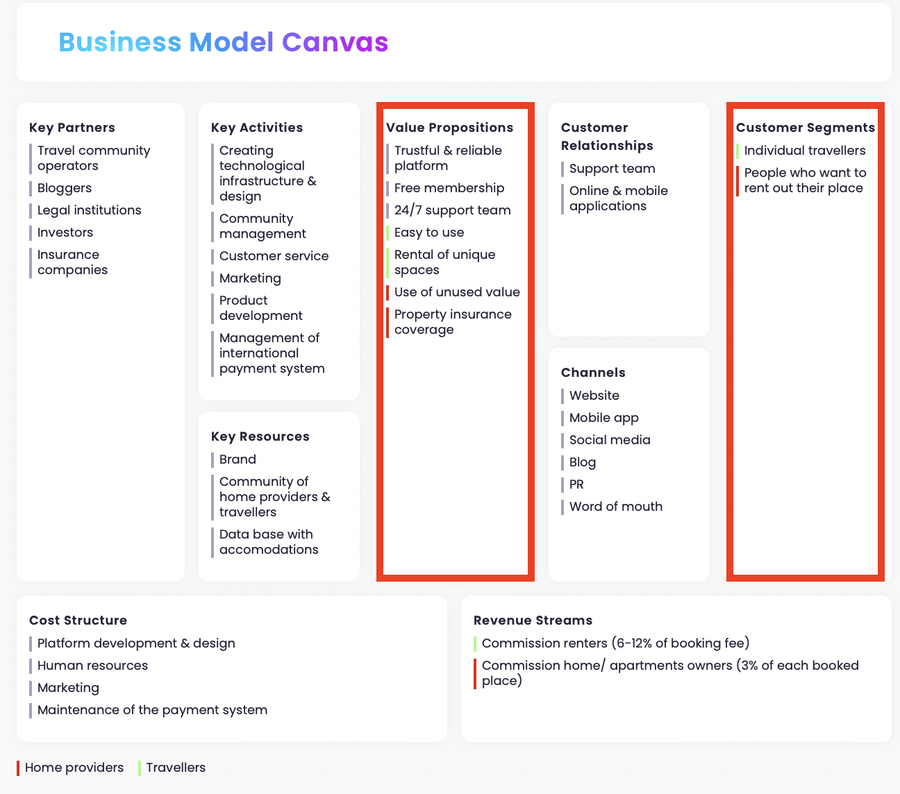Value Proposition Canvas - Developing your value proposition
What is a value proposition?
The value proposition is the central element in every business model. Because with it you define and formulate the central promise to your customer, which value or benefit you deliver to him.
The systematic elaboration of your value proposition or your value proposition design is the basis for your marketing, your pricing and a later success on the market. And the Value Proposition Canvas is the ideal tool to systematically entertain yourself with your value proposition.
Structure of the Value Proposition Canvas
The Value Proposition Canvas is divided into two sections. On the right side you look at the customer and his needs, on the left side you go into your value proposition and show how your services address the customer's needs. I will now present the two areas in the order in which you would work on them. You always set a timebox for each section and simply add previously edited sections as needed.

Right side: Customers
On the right-hand side, you always consider only a selected customer segment. This means that for each customer group or persona, it is best to develop your own value proposition canvas. This helps you to understand which parts of your service resonate best with the respective target groups. In doing so, you look at each target group from three angles.
Pains
You start with a design thinking perspective and first ask yourself what problem the customer actually wants to solve and what challenges await him in the process. In this section of the Value Proposition Canvas, you simply list all the obstacles and frustrations that prevent the customer from achieving his goal.

Gains
Gains are the other side of the coin, so to speak, because where there is shadow (pains), there must also be light (gains). This means that in this section of the Value Proposition Canvas, you deal with the question of what the customer actually has to gain. What positive experiences and results does the customer achieve by completing his task? What goals has he achieved with a successful completion? And how does he feel when he achieves his goal?
Customer jobs
Based on the jobs-to-be-done method, customer jobs describe the functional, emotional and social needs of the customer. This means that you answer the question of what the customer wants to achieve.
Social and emotional aspects in particular are often not sufficiently appreciated in the context of the value proposition and fall victim to an overly functional view. If you still find it difficult to differentiate between functional, emotional and social jobs, you can find examples of the jobs-to-be-done method here.
Left side: Value Proposition
The left side of the Value Proposition Canvas is the counterpart to the customer's needs. This means that after you have described the expectations of your customer group on the right, you now systematically start to develop the counterparts on this side of the Value Proposition Canvas. To do this, you again work out three questions.
Pain Relievers
The Pain Relievers are something like the headache tablet of your Value Proposition. They are the answer to the customer's pains in completing his task and the negative to the pains. You explicitly list how your products and services address and solve the frustrations and problems of your customers.

Gain Creators
If Pain Relievers are a headache pill, then Gain Creators are something like a fresh fruit smoothie. They are the extra for the customer, the things that create additional and perhaps unexpected value for the customer. These are the features of your performance that are at least performance or even delight features in the Kano model. Gain creators dock directly to the gains that matter to your customer.
Products and Services
Your products and services are ultimately your answer to your customer's problems and challenges. Depending on the depth of your product, you list selected features or performance characteristics individually. You should also differentiate between functional, social and emotional aspects of your service. It is important that you select the features of your product that you know or suspect are particularly important to the customer. The Kano model can help you divide your features into different categories.
You want to get more information about how you can develop your business model? Subscribe for Premium and get access to 150+ analysis!